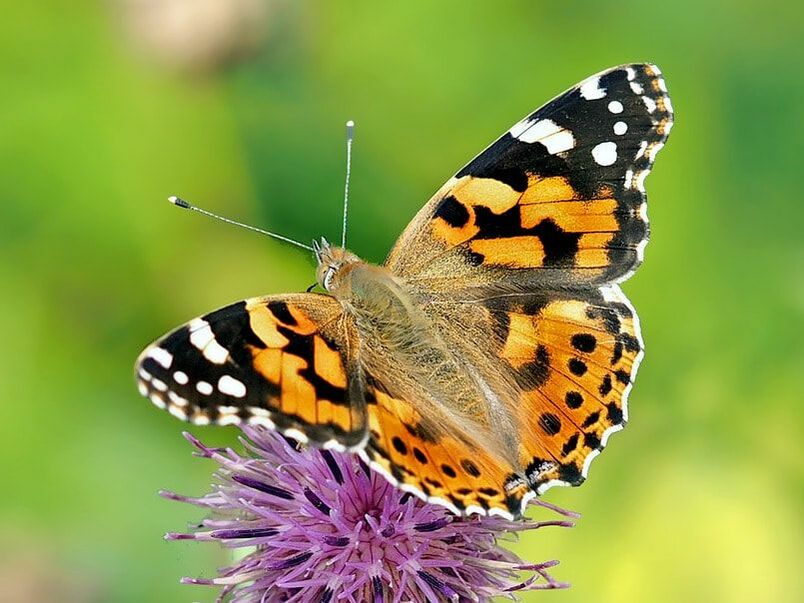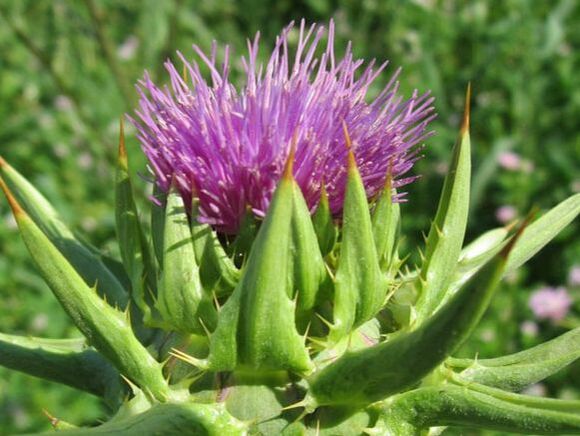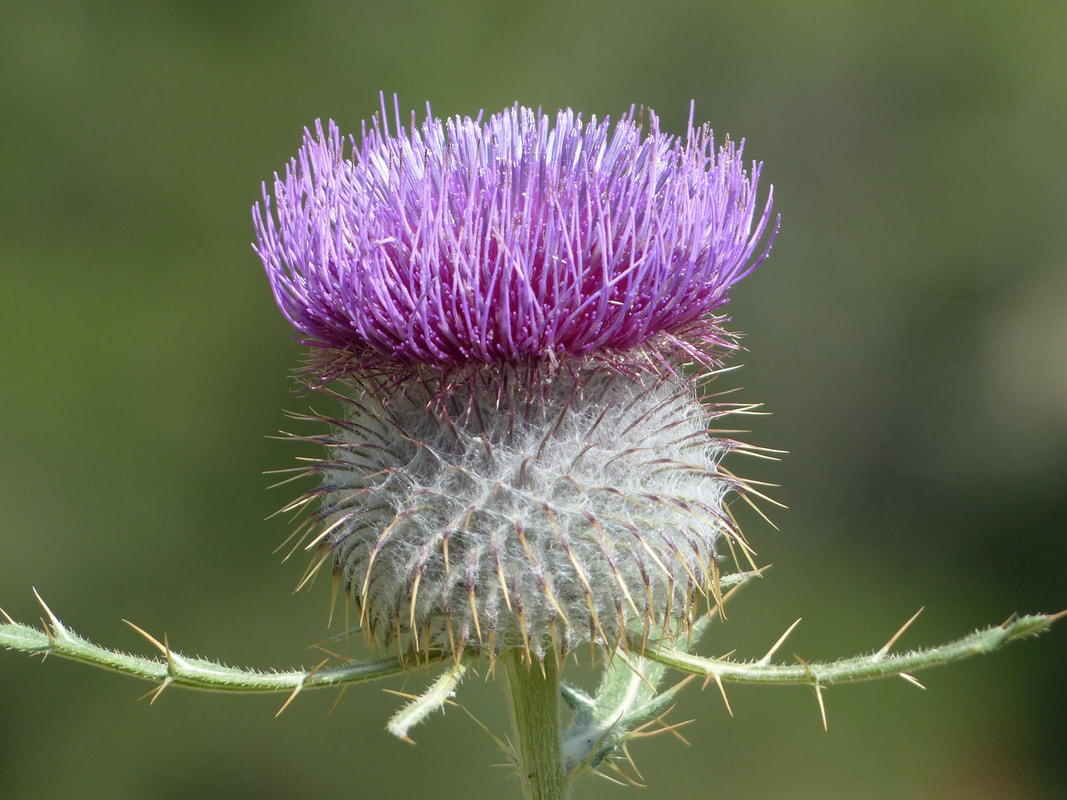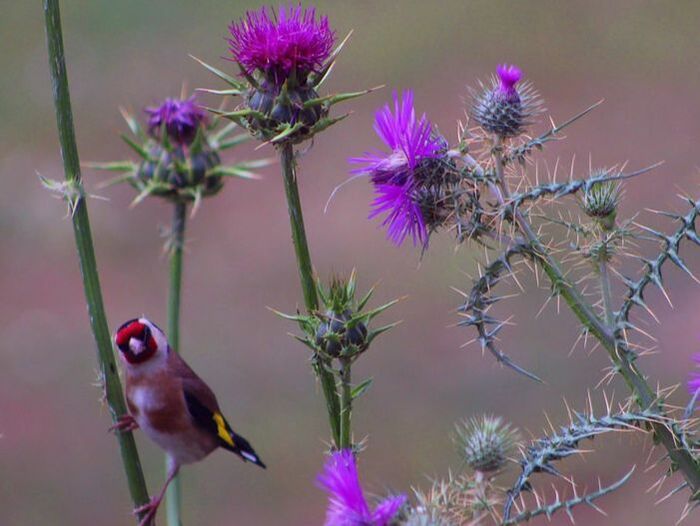Thistles
The favourite food plants of caterpillars of the Painted Lady Butterfly
Thistles supply nectar for butterflies, bees and other pollinators, producing more nectar per flower head than almost any other wildflower. But for the caterpillars of the Painted Lady butterfly they are also their main food source.
The female is not too choosy about the species she lays her eggs on. There are many different kinds of thistle found growing in Britain from the stately Spear Thistle and vanilla-scented Creeping Thistle to the much rarer Milk Thistle and Dwarf Thistle. The spines of the thistles protect against herbivores but its chemical defences are less effective against a wide range of invertebrates, from the leaf miners and stem borers that feed unseen within leaf and stem to the soldier beetles that stand guard over its flowers waiting for an unsuspecting insect to come along.
As well as its nectar being sought after by butterflies, its seeds are prized by goldfinches, which can be seen plucking them one by one from the flower heads with incredible speed and dexterity.
Thistles are attractive, easy to grow and multi-functional, so why wait!
INCREASE BIODIVERSITY BY GROWING THISTLES TO SUPPORT THE PAINTED LADY AND MANY OTHER INSECTS
The female is not too choosy about the species she lays her eggs on. There are many different kinds of thistle found growing in Britain from the stately Spear Thistle and vanilla-scented Creeping Thistle to the much rarer Milk Thistle and Dwarf Thistle. The spines of the thistles protect against herbivores but its chemical defences are less effective against a wide range of invertebrates, from the leaf miners and stem borers that feed unseen within leaf and stem to the soldier beetles that stand guard over its flowers waiting for an unsuspecting insect to come along.
As well as its nectar being sought after by butterflies, its seeds are prized by goldfinches, which can be seen plucking them one by one from the flower heads with incredible speed and dexterity.
Thistles are attractive, easy to grow and multi-functional, so why wait!
INCREASE BIODIVERSITY BY GROWING THISTLES TO SUPPORT THE PAINTED LADY AND MANY OTHER INSECTS
PAINTED LADY
|
MILK THISTLE
|
WOOLLY THISTLE
|
GOLDFINCH
|



